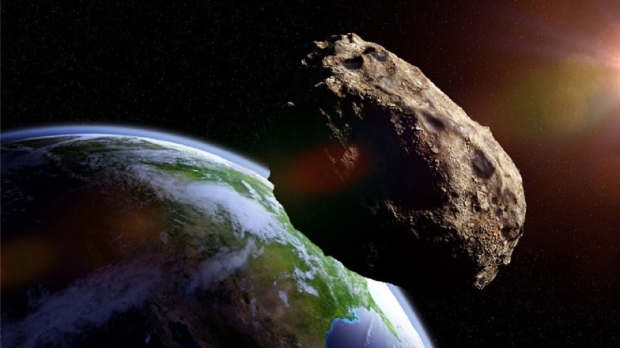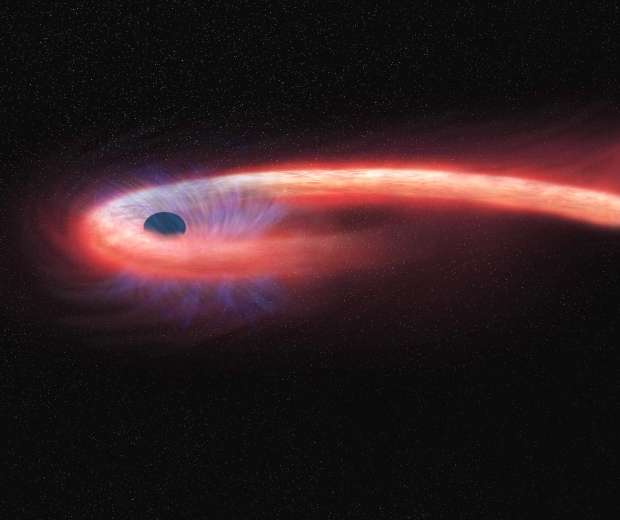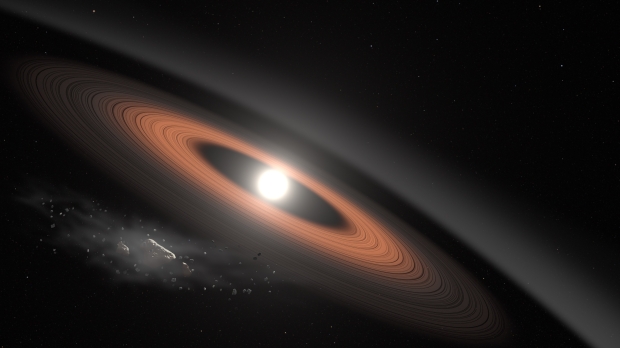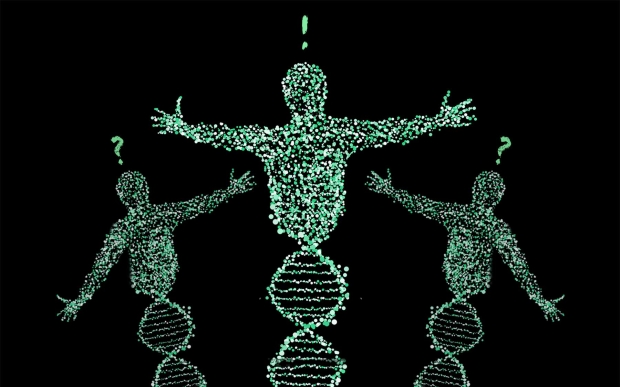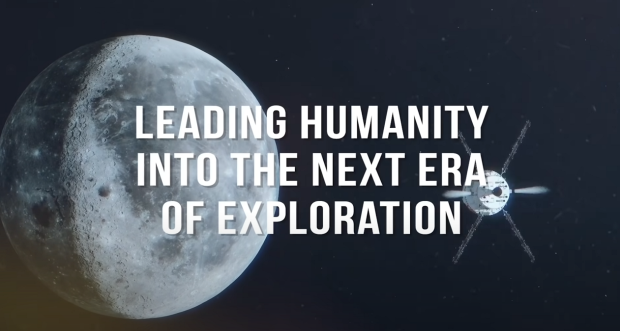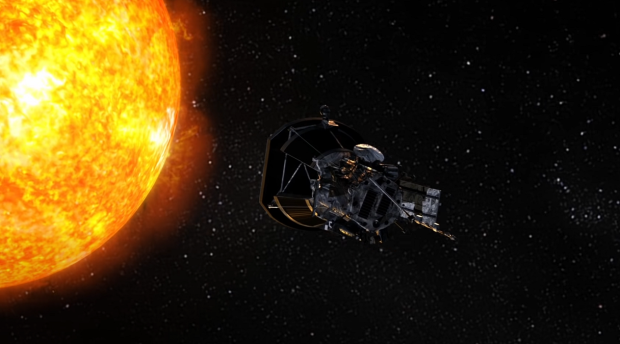Science, Space, Health & Robotics News - Page 207
Asteroid moving at 18,700 mph photographed making approach with Earth
On Tuesday, an asteroid that is approximately the size of a house safely flew past Earth, and while it was passing by, it was photographed.
On January 11 at 12:19 am ET, an asteroid dubbed 2022 AC4 that measures anywhere between 14 and 31 feet in diameter cruised past Earth at 18,700 mph. NASA's database that tracks all Near-Earth-Objects (NEO), the Center for Near-Earth Object Studies (CNEOS) indicates that the asteroid came within 58,000 miles from Earth, and while this sounds like a large distance, the moon is 221,500 miles away from Earth.
Additionally, NASA's database states that 2022 AC4 was the closest asteroid to approach Earth in the last two months. During its fly-by, Gianluca Masi, the manager of the Virtual Telescope Project in Italy, tracked the asteroid in the sky and took a 120-second-long exposure shot that can be seen above. While asteroid 2022 AC4 was quite close to Earth, NASA doesn't classify the object as a "potentially hazardous asteroid (PHA)" as the agency only considers asteroids PHA's if they come within 4.6 million miles of Earth and are greater than 500 feet in diameter.
Continue reading: Asteroid moving at 18,700 mph photographed making approach with Earth (full post)
NASA confirms when this 3,400-foot-wide asteroid will approach Earth
There are numerous asteroids floating about in space, and one in particular that is reasonably large will be making its approach with Earth soon.
All Near-Earth-Objects (NEO) are tracked by the Center for Near-Earth Object Studies (CNEOS), which is managed by NASA's Jet Propulsion Laboratory located in California. According to the database, an asteroid named 7482 (1994 PC1) will be making its closest approach with Earth next week on January 18 2022 at 4.51 p.m ET. The 3,400-foot-wide object will safely pass by Earth at five times the distance between Earth and the Moon (1.2 million miles).
1994 PC1 will be passing Earth at a ridiculous speed of 47,000 mph, and according to EarthSky, this safe passing of the asteroid will be its closest approach for the next 200 years. It should be noted that NASA considers any asteroid or comet that comes within 120.9 million miles as a Near-Earth-Object, per a mandate from Congress that required the agency to locate all NEOs 460 feet and larger by the end of 2020.
Continue reading: NASA confirms when this 3,400-foot-wide asteroid will approach Earth (full post)
This restaurant chain won't let you in unless you have bought its NFT
A restaurant chain has announced that it's the world's first "member's only private dining club", where members are required to own an NFT from the chains collection.
VRC Group, founded by media mogul Gary Vaynerchuck has announced "Flyfish Club", a new take on the restaurant industry that focuses on a private dining experience for Flyfish Club members who have purchased an NFT. The announcement states that Flyfish Club is the world's first member's only private dining club where membership is purchased on the blockchain.
So, how does it work? There are two tokens at Flyfish Club, a "Flyfish token" and a "Flyfish omakase token", the former will grant members access to the cocktail room, restaurant, and an outdoor space that features "iconic views of New York City." The Flyfish omakase token grants individuals access to everything that the Flyfish token gives access to, plus an omakase experience that is conducted by one of the best sushi masters in the United States.
Continue reading: This restaurant chain won't let you in unless you have bought its NFT (full post)
Previously unnoticed black hole found after consuming a star
The new study has been accepted for publication in The Astrophysical Journal.
All galaxies contain a black hole at their center, including Milky Way. Stars will orbit around these black orbits, but on occasion, they can stray too close and will be pulled into the black hole and consumed, undergoing a process known as spaghettification. The consumption of the star by the black hole is known as a tidal disruption event (TDE).
"Gravity around the black hole will shred these unlucky stars, causing them to be squeezed into thin streams and fall into the black hole. This is a really messy process. The stars don't go quietly," says Vikram Ravi, assistant professor of astronomy at Caltech.
Continue reading: Previously unnoticed black hole found after consuming a star (full post)
The Sun once had rings like Saturn, new study says
The new study was published in the journal Nature Astronomy on December 30th, 2021.
The researchers suggest that the rings of dust that may have existed around the sun, similar to those around Saturn, would have prevented Earth from becoming a "super-Earth." A super-Earth, according to NASA, is a type of planet about twice the size of Earth but up to ten times the mass, many of which have been found orbiting around thirty percent of the sun-like stars elsewhere in our galaxy.
To determine why our solar system doesn't have one, given their relatively common occurrence, the research team from Rice University in Houston, Texas, created simulated the formation of our solar system with computers. The simulations showed there were likely high-pressure regions of gas and dust, dubbed pressure "bumps," that would have surrounded the sun, creating three distinct zones where matter could accumulate.
Continue reading: The Sun once had rings like Saturn, new study says (full post)
Intaking more olive oil daily could help save your life
The new study was published in the Journals of the American College of Cardiology on January 10, 2022.
The researchers analyzed 60,582 women and 31,801 men from the Nurses' Health Study and the Health Professionals Follow-up Study, free of cardiovascular disease (CVD) and cancer at the study baseline in 1990. A questionnaire was used every four years over the following 28 years to assess diet, asking how often they consumed specific foods and types and brands of fats and oils.
Compared to the participants who rarely or never consumed olive oil, the participants with the highest consumption had a 19% lower risk of cardiovascular mortality, 17% lower risk of cancer mortality, 29% lower risk of neurodegenerative mortality, and 18% lower risk of respiratory mortality. Substituting 10 grams per day of other fats (e.g., margarine, butter, mayonnaise, and dairy fat) with olive oil was associated with an 8-34% lower risk of total and cause-specific mortality.
Continue reading: Intaking more olive oil daily could help save your life (full post)
Record-breaking ocean temperature recorded for the sixth year in a row
The study was published in the Advances in Atmospheric Sciences journal on January 11th, 2022.
Twenty-three researchers from fourteen institutes summarized two international datasets relating to ocean heat content from the 1950s onward in their new report, one from the Institute of Atmospheric Physics (IAP) at the Chinese Academy of Sciences (CAS), and the other from the National Centers for Environmental Information of the National Oceanic and Atmospheric Administration (NOAA).
The researchers found that in 2021, the upper 2,000 meters of all oceans absorbed 14 more Zettajoules than in 2020, equivalent to 145 times the electricity generated globally in 2020. The increased heat absorbed makes 2021 the sixth straight year of record-breaking temperatures. For context, human energy consumption only uses about half a Zettajoule each year.
Continue reading: Record-breaking ocean temperature recorded for the sixth year in a row (full post)
Troubling gene for antibiotic resistance found in U.S. water
The findings were published in the Journal of Global Antimicrobial Resistance.
The gene that was identified is the MCR-9 gene, which allows bacteria to become resistant to colistin, one of the world's most important antibiotics. The gene was detected in sewer water in Georgia collected by researchers from the University of Georgia's Center for Food Safety (CFS). MCR-9 was found in the first sample they took in urban Georgia, surprising the research team.
The gene was found with the bacteria Morganella morgani, further concerning the lead scientist Issmat Kassem. It is the first time the gene has been identified in this bacteria. The M. morganii bacteria is not often studied, so there is potential for the gene to have spread to more species of bacteria than first thought.
Continue reading: Troubling gene for antibiotic resistance found in U.S. water (full post)
Here are 10 incredible NASA missions to watch out for in 2022
NASA has taken to its Solar System Exploration website to detail 10 incredible missions to watch out for during 2022.
One of the projects is already making headlines around the world, and that is the launch and successful deployment of the James Webb Space Telescope. If you haven't heard already, NASA recently launched the JWST on Christmas Day, and since then, the observatory has been traveling to its distant destination, completing the major parts of its unfolding process during its commute.
NASA launched its Double Asteroid Redirection Test (DART) in November 2021, and it's the very first planetary defense mission designed to test a kinetic impact on an asteroid. The mission hopes to prove that slamming a spacecraft into an asteroid at 15,000 mph can change its orbit. NASA has slated the impact date for the DART spacecraft on September 26, 2022. There are many more exciting NASA missions to watch out for in 2022, and they can be found listed below.
Continue reading: Here are 10 incredible NASA missions to watch out for in 2022 (full post)
How did NASA's probe touch the Sun without melting? NASA answers
NASA's Parker Solar Probe recently "touched" the Sun as it made its approach towards our host star, but why didn't the spacecraft melt?
NASA has answered this question and many others regarding the Parker Solar Probe on its NASA Goddard YouTube channel, where the agency explains that the Parker Solar Probe is outfitted with a white heat shield that reflects light and is made out of a variety of materials that keep the spacecraft. Additionally, NASA engineers explain that the heat shield has to automatically sense if it's in the correct position to provide maximum protection for the sensitive instruments onboard the probe.
The spacecraft is equipped with solar limb sensors that, when illuminated, notify the Parker Solar Probe, and in turn, the heat shield to correct itself. The Parker Solar Probe is also equipped with a cooling system that circulates water behind the solar cells where it's warmed. The water is then pushed down into the radiators, where it is then cooled. If you are interested in learning more about the Parker Solar Probe, check out this link here.
Continue reading: How did NASA's probe touch the Sun without melting? NASA answers (full post)



